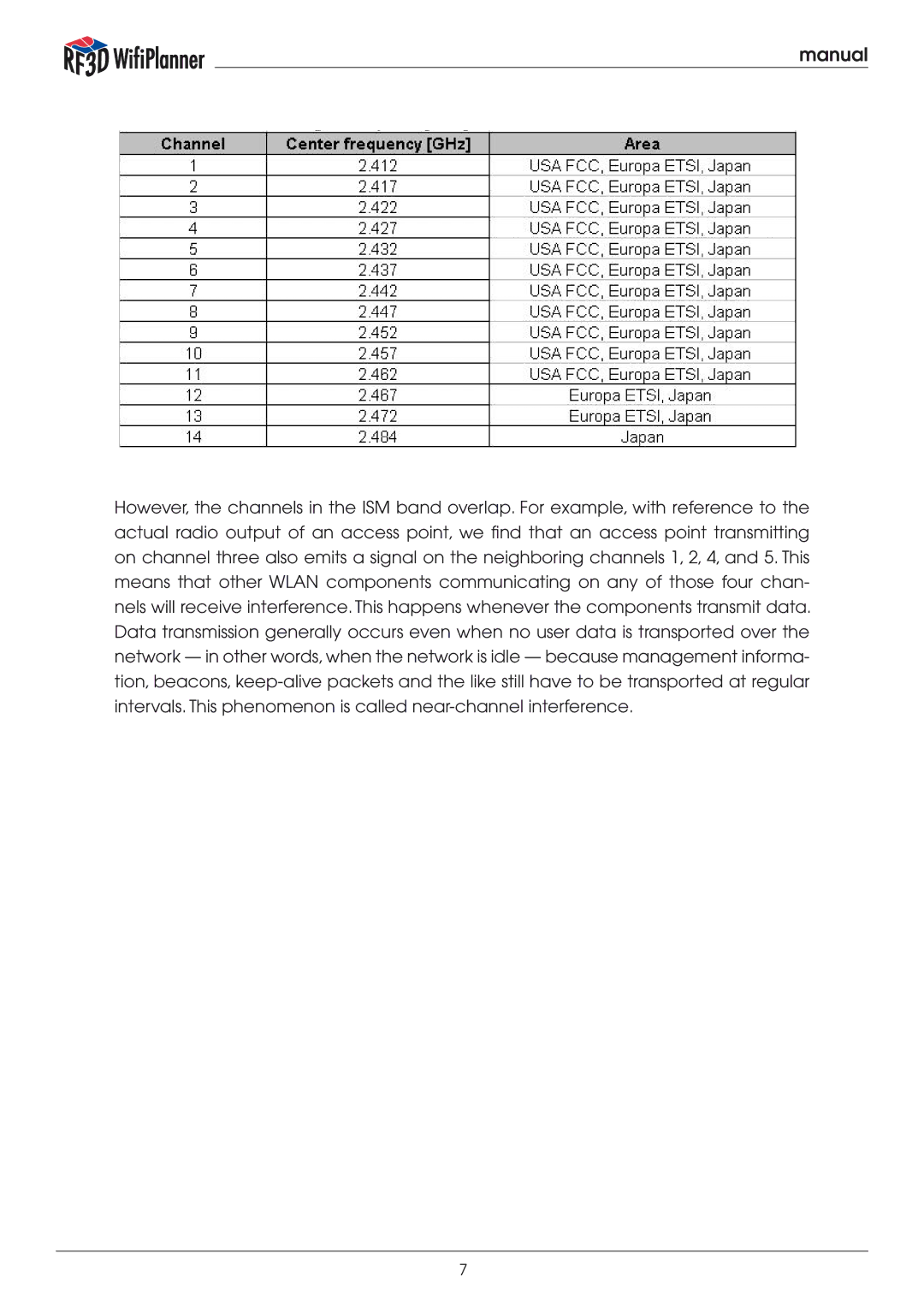
manual
However, the channels in the ISM band overlap. For example, with reference to the actual radio output of an access point, we find that an access point transmitting on channel three also emits a signal on the neighboring channels 1, 2, 4, and 5. This means that other WLAN components communicating on any of those four chan- nels will receive interference. This happens whenever the components transmit data. Data transmission generally occurs even when no user data is transported over the network — in other words, when the network is idle — because management informa- tion, beacons,
7
